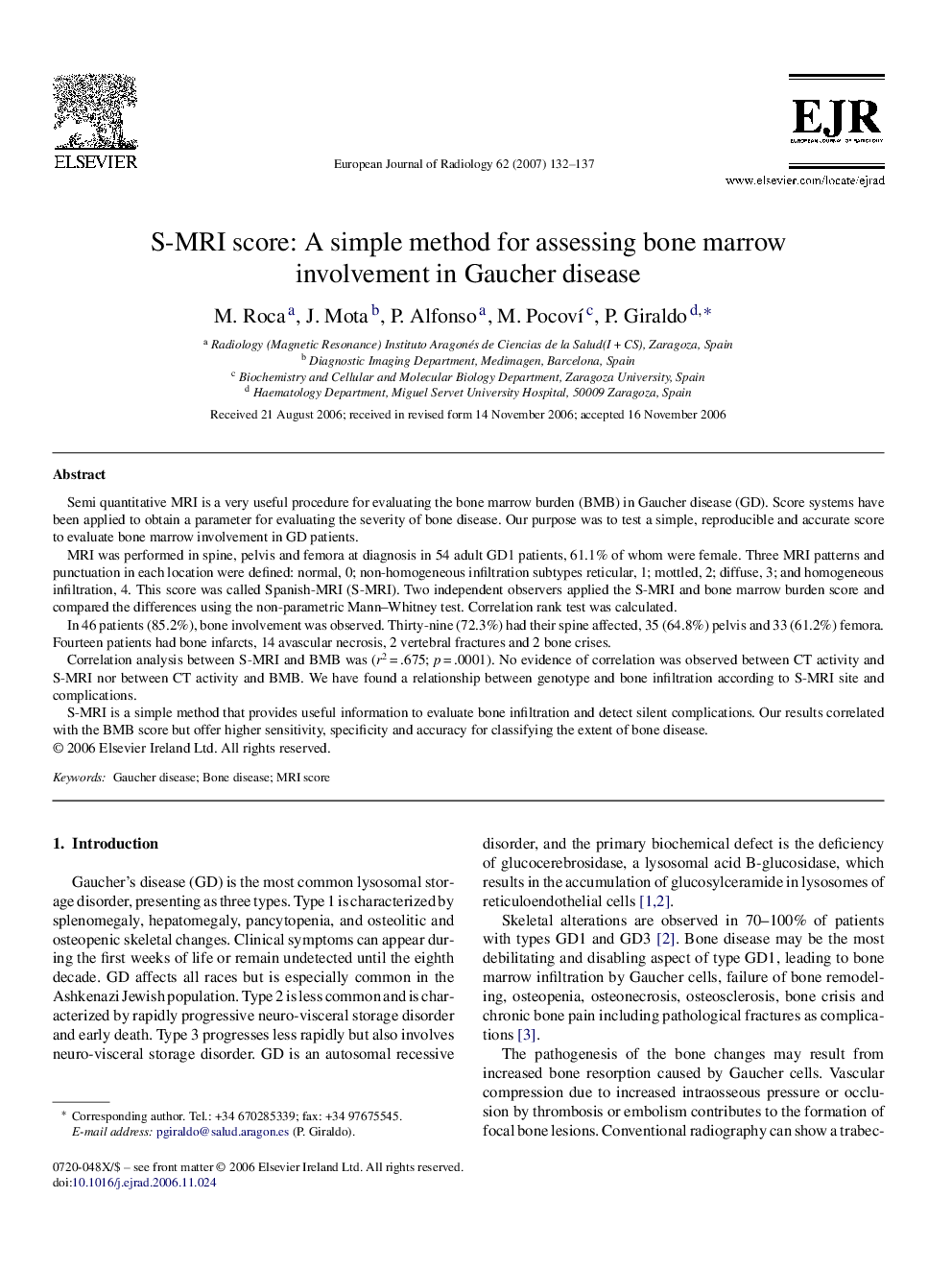| Article ID | Journal | Published Year | Pages | File Type |
|---|---|---|---|---|
| 4228442 | European Journal of Radiology | 2007 | 6 Pages |
Semi quantitative MRI is a very useful procedure for evaluating the bone marrow burden (BMB) in Gaucher disease (GD). Score systems have been applied to obtain a parameter for evaluating the severity of bone disease. Our purpose was to test a simple, reproducible and accurate score to evaluate bone marrow involvement in GD patients.MRI was performed in spine, pelvis and femora at diagnosis in 54 adult GD1 patients, 61.1% of whom were female. Three MRI patterns and punctuation in each location were defined: normal, 0; non-homogeneous infiltration subtypes reticular, 1; mottled, 2; diffuse, 3; and homogeneous infiltration, 4. This score was called Spanish-MRI (S-MRI). Two independent observers applied the S-MRI and bone marrow burden score and compared the differences using the non-parametric Mann–Whitney test. Correlation rank test was calculated.In 46 patients (85.2%), bone involvement was observed. Thirty-nine (72.3%) had their spine affected, 35 (64.8%) pelvis and 33 (61.2%) femora. Fourteen patients had bone infarcts, 14 avascular necrosis, 2 vertebral fractures and 2 bone crises.Correlation analysis between S-MRI and BMB was (r2 = .675; p = .0001). No evidence of correlation was observed between CT activity and S-MRI nor between CT activity and BMB. We have found a relationship between genotype and bone infiltration according to S-MRI site and complications.S-MRI is a simple method that provides useful information to evaluate bone infiltration and detect silent complications. Our results correlated with the BMB score but offer higher sensitivity, specificity and accuracy for classifying the extent of bone disease.
